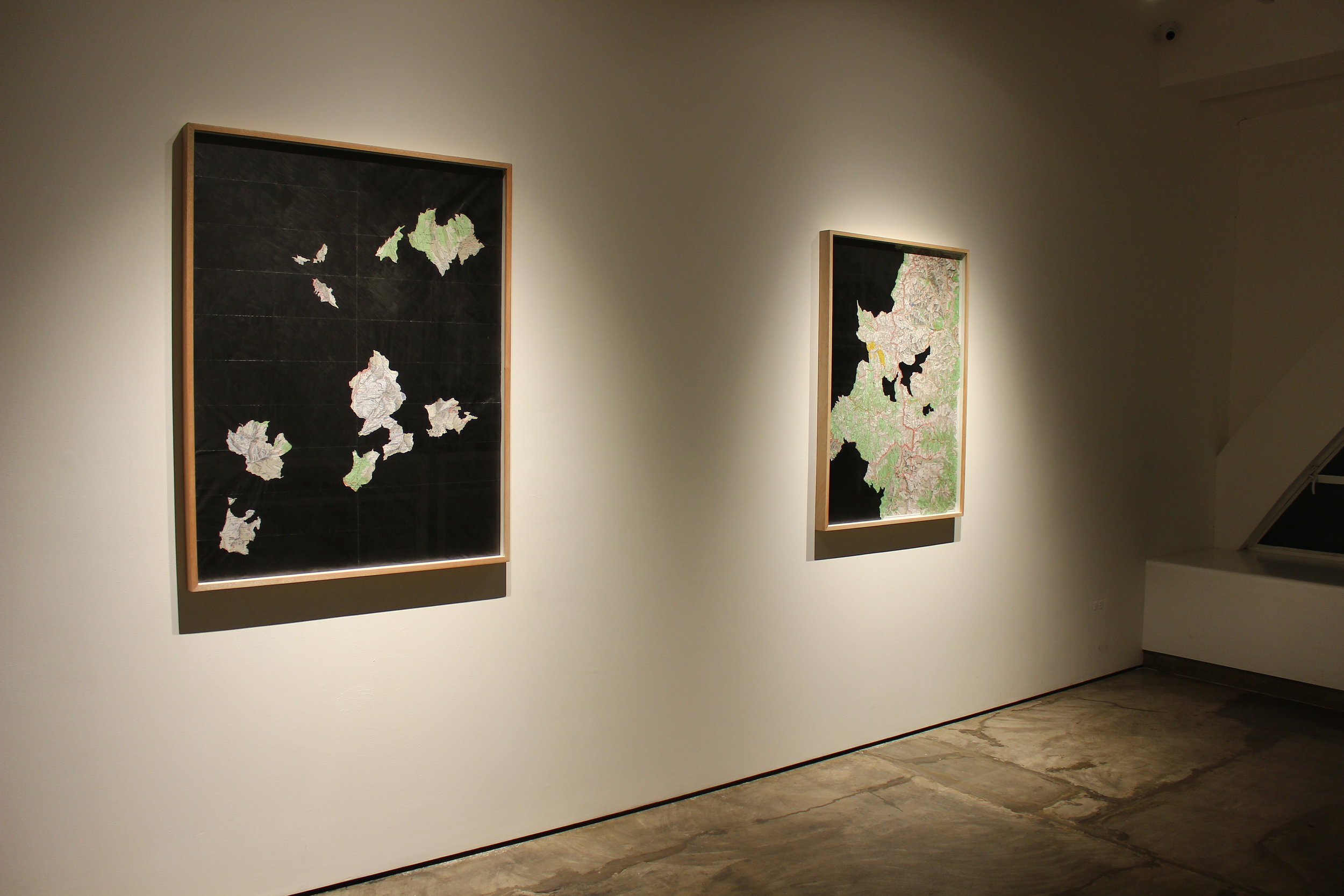Notions of Edge
Carlos Quijon, Jr.
A map, bastardizing Henri Lefebvre, is luminous in its intelligibility. It is an instrument to clarify path and nominate the next step. It captures terrain and makes it manageable. It spans routes and detours, area and edge, orbit and obstacle. In Lui Medina’s The Notion of the Edge, a map is a landscape as it is a contemplation of its own plasticity: the potential to make topographies prolific and shape places, or make apparent new ones. By marring a series of found wayfaring maps with graphite, Medina renders, on one hand, sprawls of land into isolated parcels, and on the other, into an expanse of earth, pockets of void. As additional layer of complexity to Medina’s ongoing engagement with, as one writer expounds, landscapes without landmarks, this exhibition begins with navigation and waymarking, and leads its way to drawings of land intimating a certain incipience in gesture, except for distinct edges that delineate form, with specks of graphite marking each landform’s emergence, or their completion.
In this exhibition, it is by way of edges that form and horizon are kept and kept intact, always refusing to fray. As a mark of incision, it is the edge that marks a new limit, or in another vantage, establishes novel elaborations. Two photographs that round out registers of the edge intimate either venture: a large format of a place at the foot of the Alps called Valgrana, and a projection of a small town in Davao Oriental called Cateel. In these photographs, the edge is both image and mirage: representable as somewhere, but always perpetually in the middle of nowhere, almost spectral and without landmark, intuitive in its nomination. In the photographs, horizon is held and taken, a limit enfleshed or an elaboration finally playing out. The edge is an end but also an inauguration, a recognition of both something nearing and immanent and a realization that something farther—more distant and more removed—persists.
In Medina’s hands, earth is prone to form, to fragment and splinter, prospected in pieces. The disposition discovers as it delimits. Graphite becomes material of metamorphosis. The hands that carve and section are the same hands that gesture towards a glimpse of something grander, something more encompassing, emerging. Here, graphite is germane: the same material that seemingly melts and is molded approximating the certain form of land becomes gentle sea that unmoors certainties of destination, proliferating premises of possibility, edgewise.








